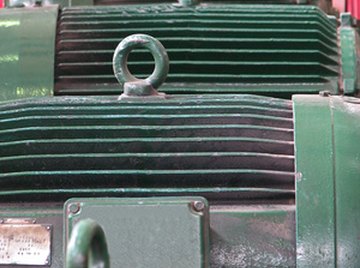
AC (alternating current) motors are low-cost and high-efficiency mechanisms used in large variety of applications. AC motors offer a simple design, consisting of a magnetically driven, copper wounded stator and a rotor mechanism. In AC motors, the input alternating current creates a rotating magnetic field over the stator, which ultimately moves the rotor, which is connected with an output shaft. From heavy industrial to household environments; different types and categories of AC motors have applications wherever electrical appliances are utilized.
Synchronous Motors
In synchronous AC motors, the speed of rotor is proportional to the stator, i.e., they both rotate in a synchronized fashion. These motors are known for their efficiency in maintaining the power of the overall system and can be used as stepper motors in some cases. Synchronous motors find their major applications in areas where accuracy is important, for instance, in clocks, timers, electromechanical robots, metering pumps, speed controllers and other industrial processes. Also, synchronous AC motors are specifically used in high-precision drill machines and similar devices.
Induction Motors
Induction motors are the most common type of AC motors used in daily life processes, and their output rotation speed is proportional to the applied frequency of alternate current. Used in almost every process, induction motors are mainly used in water pumps, kitchen appliances, fans and air conditioners, automobiles and common industrial machinery like boiler pumps and compressors. AC induction motors are efficient and flexible, which allows them to match the load demand for almost any type of electrical application.
Linear Motors
Linear AC motors are quite different in terms of operational and functional characteristics than conventional AC motors. These motors produce a linear power to push or pull an object along their length, in place of creating a torque-based (rotation around stator axis) rotary action. This happens because of their flat and spread-out structure in contrast to other AC motors. Due to these properties, linear AC motors are widely used in ground-based rails, monorails, magnetic levitation lines, roller coasters and similar transportation machinery.
Adjustable Speed Motors
Adjustable speed AC motors provide a special feature in terms of their speed control and management. These motors change their rotor speed among some pre-defined values just by switching the number of poles (pairs of copper wounded permanent magnets) contained within. This specific characteristic gives them applications in marine and land machinery, electrical power plants, cargo pumps and water cooling equipments. In general, adjustable speed AC motors are used in all systems and processes where automatic switching of rotor speed is required.
Universal Motors
Universal Motors are generic AC motors that are operated on both alternate current and direct current sources. The most significant feature of universal AC motors is their constant high rotary speed (often measured in thousands of rounds per minute), which makes them useful in a wide range of applications like railway traction mechanisms, high-power engineering and commercial drill machines, industrial and kitchen blenders, vacuum cleaners, dryers and trimmers.
References
About the Author
Working from New York City, Saifuddin Abdullah is a freelance writer and linguist. With expertise in communications, electronics and mathematics, he has written for projects including WritingBee and Paktranslations MLT. Abdullah holds a bachelor's degree in telecommunications engineering from M.A.J. University, Karachi.
Photo Credits
motors image by Dusan Radivojevic from Fotolia.com
